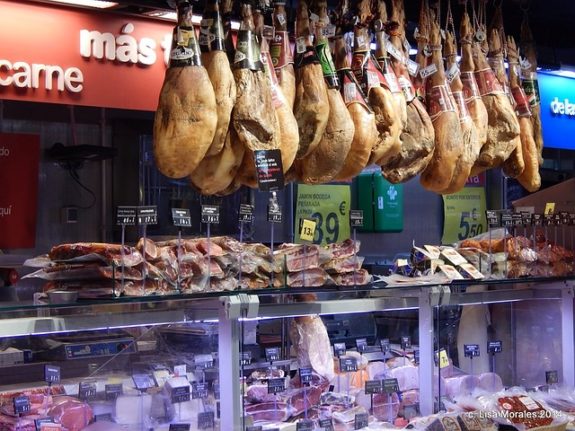It doesn’t take an economist to understand the effects of inflation in Spain. If you live here, a simple look in your shopping basket over the last couple of years tells you all you need to know.
Whether it be olive oil reaching €10 per litre or the cost of basic foodstuffs like bread, butter and cheese going up, food prices have skyrocketed in Spain since the Covid-19 pandemic and Russia’s invasion of Ukraine.
READ ALSO: Why is olive oil cheaper overseas when Spain is the world’s top producer?
In fact, taking a look at the statistics reveals some pretty eye-watering data for consumers: from 2021 to 2022 prices rose by 15.4 percent, and then from 2022 to 2023 by a further 14.1 percent.
In this era of high inflation putting pressure on Spanish consumers, many have started to skip on luxuries. But with prices rising so much, making savings where you can (often on things that were once staples but have now become luxury items) has become paramount for many people.
Fortunately, Spain’s consumer watchdog, the Organisation of Consumers and Users (OCU), has released an in-depth report on the cheapest supermarket chains in Spain, and even looked into the provincial differences so you can find the cheapest chain in your area.
The cheapest supermarket chains in Spain
“All supermarket chains without exception have raised prices between 2022 and 2023,” Enrique García, OCU spokesman, said during the annual presentation of the watchdog’s report. “Shopping basket prices have risen by 30.5 percent in two years, causing a clear loss of purchasing power for households and, in addition, consumers have changed their consumption habits. Ninety-seven percent of them have changed the way they shop in search of savings,” explained García.
READ ALSO: Energy prices drive up inflation in Spain in September
So, with almost all Spanish shoppers changing their spending habits, where can you get the best bang for your buck?
The graph below shows the evolution of princes in a range of the main supermarket chains in Spain, compared to both the Consumer Price Index (IPC general) and the index tied to food prices (IPC alimentos).

Of the better known brands in Spain, Masymas, Eroski (including various regional chains), Mercadona, Consum, Lidl, and, perhaps rather surprisingly given the profile of its usual clientele, El Corte Inglés, all raised prices below the rate of the foodstuff IPC, with rises ranging between 8 and 12 percent.
At the other, costlier end of the spectrum, E. Leclerc, Supeco, Carrefour (including Express, Market and regular store chains), Alcampo, Supercor, and Día all put up their prices above the IPC rate. Price rises ranged between 12 and 17 percent in these stores.
READ ALSO: The food products in Spain that will rise in price due to drought
The cheapest supermarket chain in each Spanish province
The OCU report also provides some interesting provincial data. After visiting 1,108 supermarkets in 65 cities across Spain and analysing online prices, the consumer watchdog has compiled figures on the cheapest shops in each of the 50 provinces of Spain.
Álava – Mercadona
Albacete – Alcampo
Alicante – Supeco
Almería – Consum
Asturias – Alcampo
Badajoz – Mercadona
Balearic Islands – Mercadona
Barcelona – Mi Alcampo
Burgos – Tifer
Cáceres – Supeco
Cádiz – Alcampo
Cantabria – Mercadona
Castellón – Alcampo
Ciudad Real – Mercadona
Córdoba – Deza
Cuenca – Alcampo
Girona – Mercadona
Granada – Dani
Guadalajara – Family Cash
Guipúzcoa – Alcampo
Huelva – Cash Fresh
Huesca – Alcampo
Jaén – Dani
La Coruña – Alcampo
La Rioja – Alcampo
Las Palmas de Gran Canaria – Alcampo
León – Tifer
Lérida – Mercadona
Lugo – Family Cash
Málaga – Cash Fresh
Madrid – Alcampo
Murcia – Alcampo
Navarra – Mercadona
Orense – Mercadona
Palencia – Tifer
Pontevedra – Alcampo
Salamanca – Supeco
Santa Cruz de Tenerife – Hiperdino
Segovia – Mercadona
Sevilla – Family Cash
Soria – Mercadona
Tarragona – Consum
Teruel – Alcampo
Valencia – Alcampo
Valladolid – Tifer
Vizcaya – Mercadona
Zamora – Tifer
Zaragoza – Alcampo
The cheapest individual supermarkets in all of Spain
The report also identified the individually cheapest supermarkets in Spain. The cheapest of all the establishments visited by the OCU were the Alcampo hypermarkets in Coia in Vigo (Galicia) and Murcia. Dani supermarkets in Granada were also among the cheapest.
The most expensive visited by OCU were the Sánchez Romero chain supermarkets.
The OCU also calculated a joint index for all the supermarkets grouped under the same banner to draw up a ranking of chains according to their price level. In this study, the cheapest chains came out as Dani, among local chains, Tifer among regional chains, and Family Cash and Alcampo among national chains.



 Please whitelist us to continue reading.
Please whitelist us to continue reading.
Member comments